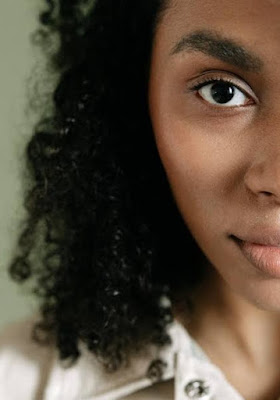The Recipe for Curls!
 |
| Image:pexels.com |
Ever pondered why some people have bouncy curls, and others straight, sleek locks? The answer lies in the fascinating world of genetics and the intricate molecular structures that dictate the texture of our hair!
Firstly, our hair texture is determined by a combination of genetic and environmental factors. Genes play a crucial role in defining the structure of our hair - with multiple genes contributing to its texture, density, and colour. But when it comes to the dominant-recessive relationship of curly hair, things get a bit more complex.
Is Curly Hair a Dominant Gene?
If you and your partner have naturally curly hair, there’s a high chance your children will inherit those curls (although not always … we did say genes are fascinating!).
If one parent has a curly-haired gene and the other a straight-haired gene, you’re likely to have children with curly hair. So, yes, curly hair is considered a “dominant” gene trait.
Where it gets confusing is that curly hair is not just determined by one single dominant gene. Instead, multiple genes interact to create the perfect recipe for curls. These genes influence factors like the shape of the hair follicle and the protein composition of the hair shaft.
At a Biological Level, All Hair Textures are the Same
It may sound strange, but it’s true! All hair starts out the same; It’s the way it grows out of your scalp that determines whether it’s straight, curly, or wavy.
Hair follicles are tiny structures in your skin, just beneath your scalp, and the way they curve plays a pivotal role. Oval follicle shapes produce curly hair, while round follicles produce straight hair. A more flattened oval shape will create kinky, coily hair.
The hair bulb (a pear-shaped structure located at the base of the hair follicle) is also involved. For those with curly hair, the bulb is slightly hooked, contributing further to the winding shape. Straight-haired people will have little to no hook on the bulb.
Keratin: The Building Blocks of Curls
The protein keratin is the fundamental building block of our hair, and its arrangement within the hair shaft (what you see when the hair grows out of your follicle) helps determine its texture.
In curly hair, keratin proteins are arranged in a spiral pattern, resulting in the characteristic twists and turns we associate with curls. This differs from straight hair, where the proteins align more uniformly, creating a sleeker appearance.
Curly Hair is Not Necessarily for Life
While genetics provide the blueprint for our hair, environmental factors can also influence
whether your hair remains curly, straight, or somewhere in-between. These could include:
Hormonal changes, during pregnancy or menopause for example, which can impact your hair follicle structure - resulting in textural hair changes.
Moving to a more humid environment may enhance curliness, while a cooler, drier location may be more conducive to straighter hair.
Health conditions like Alopecia, or medications and treatments like chemotherapy, can thin your hair and make it appear less curly.
Your overall health and nutrition also play a significant role. When you’re at your healthiest, your hair is going to look shinier, fuller, and more vibrant and the texture may vary accordingly.
Understanding the science behind curly hair shines light not only on our complex genetics, but also the beauty of human diversity. Our hair contributes to our own unique charm and character. So, whether yours cascades in curls or falls in a sleek sheet, embrace the science that makes you, you!






















0 komentar:
Post a Comment